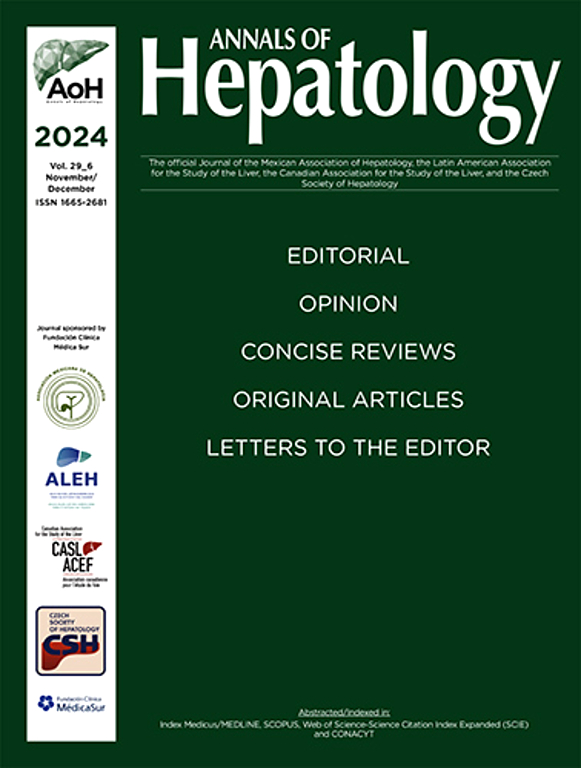P-29 DIFFERENCES IN THE PROGRESSION OF BODY COMPOSITION AND LIVER DAMAGE IN A MURINE MODEL OF METABOLIC SYNDROME: A SEX PERSPECTIVE
IF 3.7
3区 医学
Q2 GASTROENTEROLOGY & HEPATOLOGY
引用次数: 0
Abstract
Conflict of interest
No
Introduction and Objectives
The Metabolic dysfunction associated with fatty liver (MAFLD) is the most common hepatic affection worldwide1. The critical pathophysiological hallmark of MAFLD is the hepatocyte's accumulation of intracellular fats2.
The gold standard for diagnosing MAFLD is liver biopsy; however, this method is invasive and cannot be used to follow the progression of the disease. On the other hand, changes in total weight and body fat distribution can be used for clinically suspected indicators of MAFLD progression3,4; however, sex dependence is not completely elucidated.
This study aims to investigate the sex differences in body composition changes and their relationship with liver disease progression in the eNOS KO. The eNOS KO is a metabolic model of MAFLD and recapitulates the disease in 8-12 weeks when fed a high-calorie and high-fat diet5.
Patients / Materials and Methods
We fed 8 groups of 12-week-old eNOS KO mice for 0 weeks (n=6), 4 weeks (n=6), 8 weeks (n=6), and 12 weeks (n=6)
At each time point, an in vivo MRI imaging of body composition and Dixon Quant quantification were acquired using a Philips Ingenia 3T MR scan. We harvested the liver each time for histology analyses and obtained plasma for serological measurements.
All data were analyzed using no parametric statistics in Prism 9.0.0 (GraphPad Software Inc, La Jolla, CA). Principal Component Analysis (PCA) statistical package R v4.0.2.
Results and Discussion
Males and females increased their weight during the diet intervention (23% males, 13% females, fig. 1A); however, both groups ate a similar amount of food. Males showed greater visceral fat accumulation than females throughout the intervention period; when we adjust for body weight, males have a significantly higher proportion of visceral fat volume per unit of mass than females (fig. 1B).
During the dietary intervention, the mice showed a progressive increase in the NAS score, with females reaching a maximum score of 3 and males reaching 5 (fig. 1C).
Using the dimensionality reduction technique and the KNN classification boundary, it was possible to demonstrate that the animals are grouped according to the progression of the disease but also grouped by sex (fig. 1D).
Conclusions
The progression of MAFLD showed different phenotypes in males and females. Using markers from body composition, liver and muscle fat fraction, it was possible to identify sex-dependent clusters that correlate with the liver damage progression. Our results suggest the need to identify diagnostic and progression markers of MAFLD differentiated by sex.
求助全文
约1分钟内获得全文
求助全文
来源期刊

Annals of hepatology
医学-胃肠肝病学
CiteScore
7.90
自引率
2.60%
发文量
183
审稿时长
4-8 weeks
期刊介绍:
Annals of Hepatology publishes original research on the biology and diseases of the liver in both humans and experimental models. Contributions may be submitted as regular articles. The journal also publishes concise reviews of both basic and clinical topics.
 求助内容:
求助内容: 应助结果提醒方式:
应助结果提醒方式:


